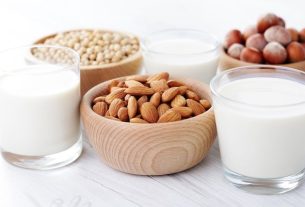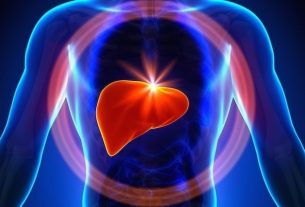Some home remedies, such as tansy tea, valerian tea or white willow infusion, have anti-inflammatory and relaxing substances, which help to relieve migraine headaches faster, in addition to helping to control the onset of migraines. of new crises.
Migraine is a headache that is difficult to control, which mainly affects women, especially in the days before menstruation and, in addition to teas, other natural options are controlling the type of food you eat, as well as doing acupuncture or practicing meditation.
Home remedies are a great way to complement medical treatment for migraines, and it is important to always consult a neurologist when migraines are frequent or chronic to identify the cause of the migraine, and thus be able to recommend the most appropriate treatment. See the main remedies to treat migraines.

8 home remedies for migraines
Some home remedy options for migraines are:
1. Tansy tea
Tanacet, known scientifically as Parthenium tanacetumis a medicinal plant that has a strong effect on migraines, helping to relieve pain, but also preventing the appearance of new attacks.
This tea can be used during a migraine attack, but it can also be drunk regularly to prevent new attacks from appearing.
Ingredients
- 15 g of tansy leaves;
- 500 m of boiling water.
Preparation mode
Add the tansy leaves with boiling water and let it rest for 5 to 10 minutes. Then strain, let it cool and drink up to 3 times a day.
This plant should not be used during pregnancy or by people who are using anticoagulants, as it increases the risk of bleeding.
Another way to use tansy is to take capsules, as it is easier to control the amount of active substances. In this case, you should take up to 125 mg per day or according to the manufacturer’s or herbalist’s instructions.
2. Ginger tea
Ginger is a root with powerful anti-inflammatory action that appears to be capable of relieving the pain caused by migraines. Furthermore, ginger also acts on nausea, which is another symptom that can appear during a migraine attack.
According to a study carried out in 2013 (1)powdered ginger appears to be able to reduce the intensity of a migraine attack in up to 2 hours, and its effect is compared to that of sumatriptan, a medicine indicated for the treatment of migraines.
Ingredients
- 1 teaspoon of powdered ginger;
- 250 ml of water.
Preparation mode
Put the ingredients to boil together in a pan. Then, let it cool, stir the mixture well and drink it up to 3 times a day.
Ginger should be used under medical supervision in pregnant women or people with diabetes, high blood pressure or who use anticoagulants.
3. Petasites hybridus
The use of the medicinal plant Petasites hybridus It has been associated with a decrease in the frequency of migraines and, therefore, its intake can help prevent the appearance of new attacks, especially in people who regularly suffer from migraines.
How to use
Petasites needs to be taken in the form of capsules, at a dosage of 50 mg, 3 times a day, for 1 month. After this initial month, you should only take 2 capsules per day.
Petasites is contraindicated during pregnancy.
4. Valerian tea
Valerian tea can be used by migraine sufferers to improve sleep quality, which is often affected in people who suffer from frequent attacks. Because it is calming and anxiolytic, valerian tea also helps prevent new migraine attacks.
Ingredients
- 1 tablespoon of valerian root;
- 300 mL of water.
Preparation mode
Put the ingredients to boil in a pan for 10 to 15 minutes. Let it rest for 5 minutes, strain and drink twice a day or 30 minutes before bed.
Along with valerian tea, you can also take melatonin supplementation, as in addition to helping to regulate sleep, melatonin also has a strong antioxidant action and appears to help prevent the appearance of new migraine attacks.
Valerian tea should not be used for more than 3 months and should also be avoided during pregnancy.
5. White willow infusion
White willow infusion, prepared with the medicinal plant Salix albais rich in salicin, a substance similar to the main ingredient in aspirin, with analgesic and anti-inflammatory properties, which help relieve migraines.
Ingredients
- 1 teaspoon of dried and chopped white willow bark;
- 1 cup of water.
Preparation mode
Bring the water to a boil and add the willow bark. Let it boil for 10 minutes, strain, wait for it to cool and drink up to 2 cups a day.
This infusion should not be consumed by children, pregnant or breastfeeding women, people who are allergic to acetylsalicylic acid or who are using anticoagulants.
Furthermore, the use of white willow bark infusion is not recommended for people with gastrointestinal problems, such as ulcers, gastritis, gastroesophageal reflux, colitis or diverticulitis.
6. Coriander tea
Coriander tea, prepared with the seeds of the medicinal plant Corianderhas anti-inflammatory properties that can help reduce the duration, severity and frequency of migraines.
Ingredients
- 1 tablespoon of coriander seeds;
- 500 mL of water.
Preparation mode
Bring the water to a boil, and as soon as it boils, add the coriander seeds, letting it boil for 2 minutes in the water. Then turn off the heat and let it rest for about 10 minutes. After this time, strain, wait for it to cool and drink the tea throughout the day.
This tea should not be used by people allergic to coriander, mugwort, anise, caraway, fennel or dill, in addition to being contraindicated for pregnant or breastfeeding women.
Coriander tea should be used with caution by people with diabetes, as it may cause low blood sugar or interfere with diabetes medications, and cause hypoglycemia.
7. Lavender essential oil
Lavender essential oil can help reduce headaches and the severity of migraine attacks due to its analgesic properties, and help alleviate sensitivity to light, nausea and vomiting caused by acute migraines.
However, although it can be used during a migraine attack to help alleviate symptoms, lavender essential oil should not be used to treat migraines as it may increase the risk of recurrence.
Ingredients
- 1 to 3 drops of lavender essential oil;
- 2 teaspoons of a carrier oil, such as coconut oil, castor oil or sweet almond oil.
Preparation mode
Mix the ingredients in a clean, dry container. Then, apply a little of the mixture to the temples, located on the sides of the face, between the eyes and ears.
Another way to use lavender oil for migraines is through aromatherapy, which can be done by deeply inhaling the aroma of the essential oil directly from the bottle, holding the air in the lungs for about 2 to 3 seconds, before exhaling. See other ways to use lavender essential oil.
8. Chamomile tea
Chamomile tea, made from the medicinal plant Matricaria recutitahas analgesic and anti-inflammatory properties that help reduce headaches caused by migraines, as well as helping to reduce nausea, vomiting and sensitivity to light.
Furthermore, chamomile is rich in apigenin, a substance that acts on brain receptors, causing a relaxing and calming effect.
Ingredients
- 1 teaspoon of fresh or dried chamomile flowers;
- 1 cup of boiling water.
Preparation mode
Add the chamomile flowers to a cup of boiling water, cover and leave to infuse for 5 to 10 minutes. Afterwards, remove the flowers from the water. Leave to cool and then drink. You can drink the tea 2 to 3 times a day or as soon as the headache starts.
Chamomile tea (Matricaria recutita) is safe and can even be ingested by pregnant women and children. However, Roman chamomile tea (A noble chameleon) should be avoided, as there are still no studies that prove the safety of using this type of plant during pregnancy and breastfeeding.
How to adjust your diet
In addition to using medications recommended by your doctor and home remedies, it is also very important to adjust your diet.

Sign up for our newsletter and stay up to date with exclusive news
that can transform your routine!
Warning: Undefined array key "title" in /home/storelat/public_html/wp-content/plugins/link-whisper-premium/templates/frontend/related-posts.php on line 12
Warning: Undefined array key "title_tag" in /home/storelat/public_html/wp-content/plugins/link-whisper-premium/templates/frontend/related-posts.php on line 13



